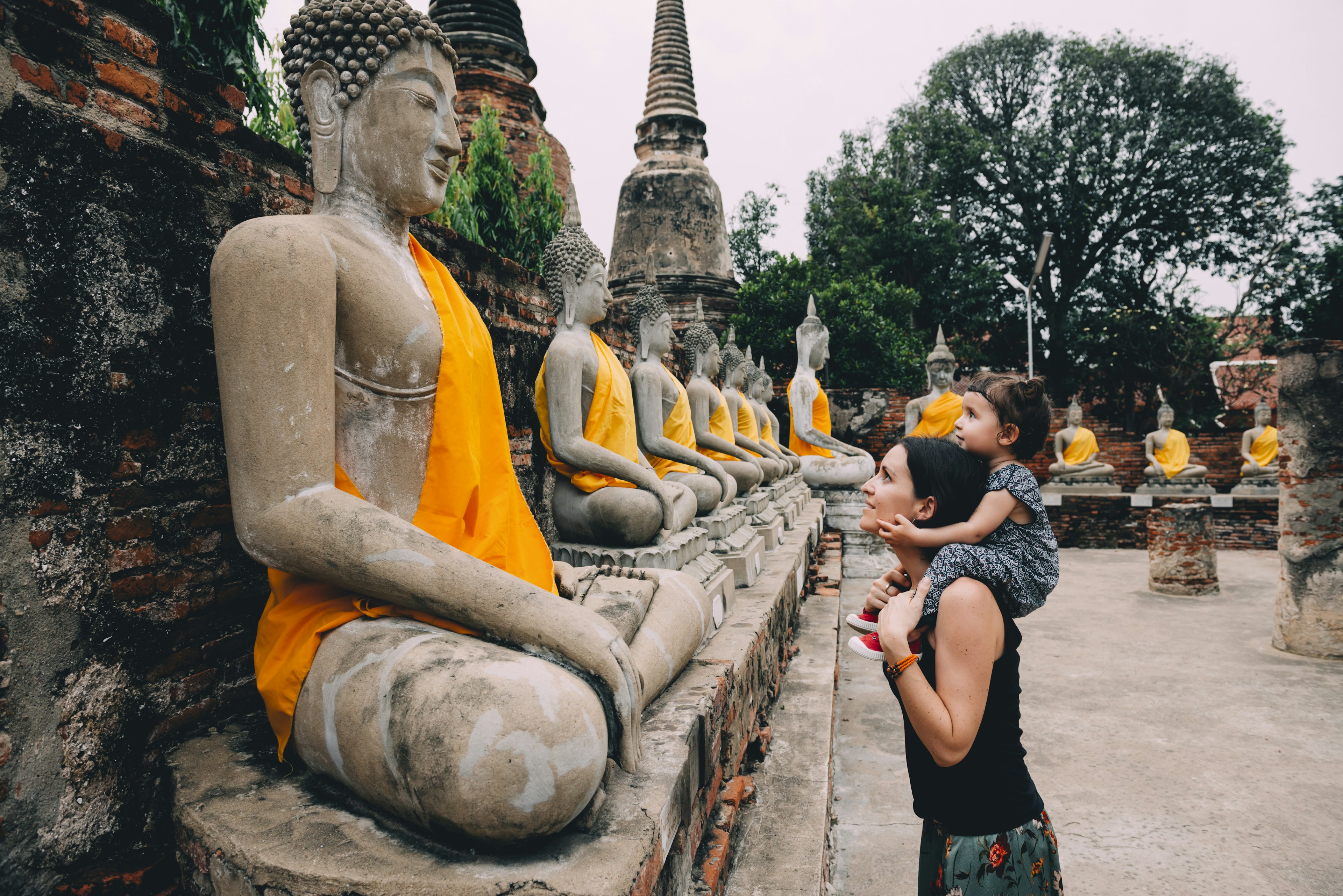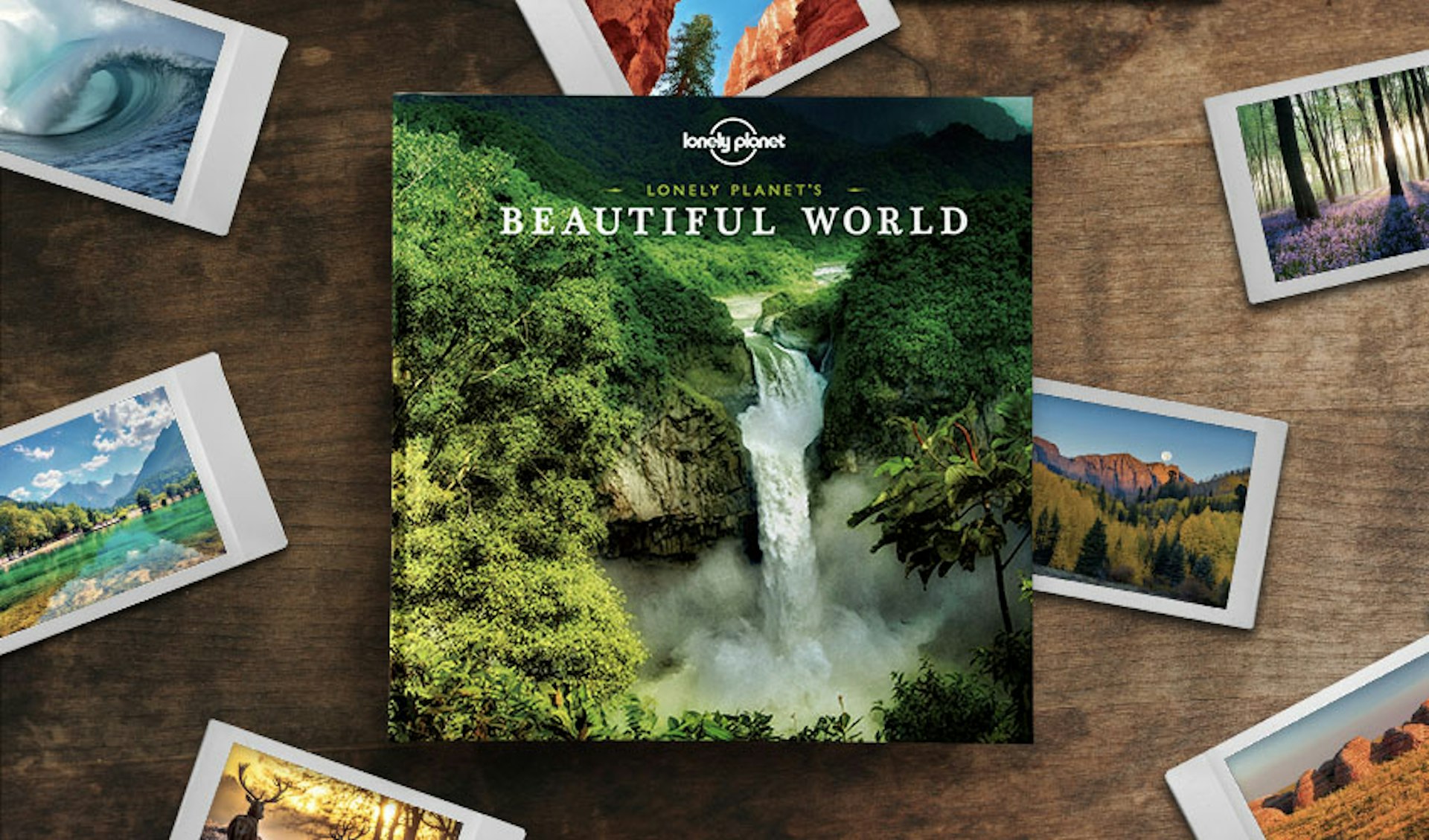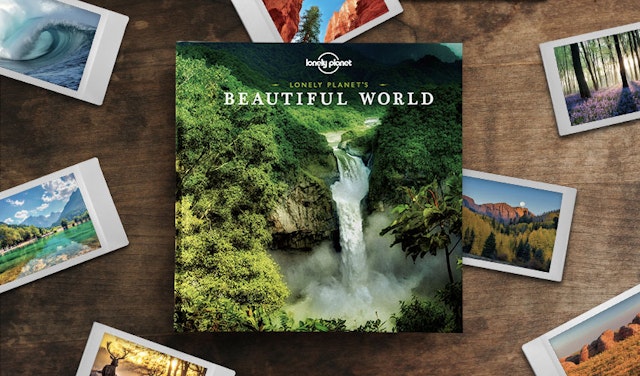Thailand is hailed worldwide as the land of smiles and golden temple spires. A country where the beaches are so brilliantly white you have to wear shades, and where the curries are so scorchingly hot they make your toes tremble. All of this is true, and more, which leaves travelers facing a tricky question: with so many amazing things to see and do, where do you begin?
The following top sights and experiences can help you narrow it down, but before you start ticking things off your bucket list, there’s a geographical decision to make: do you go north, or south, or both? The south has the beaches and coral reefs, but the north has the pick of the culture, national parks and historic ruins.
Also pay attention to the weather – monsoon rains drench the beaches and turn jungle roads into rivers from July to October. On the other hand, it doesn’t rain all day, every day, and you’ll certainly see another side to Southeast Asia’s top tourist destination.
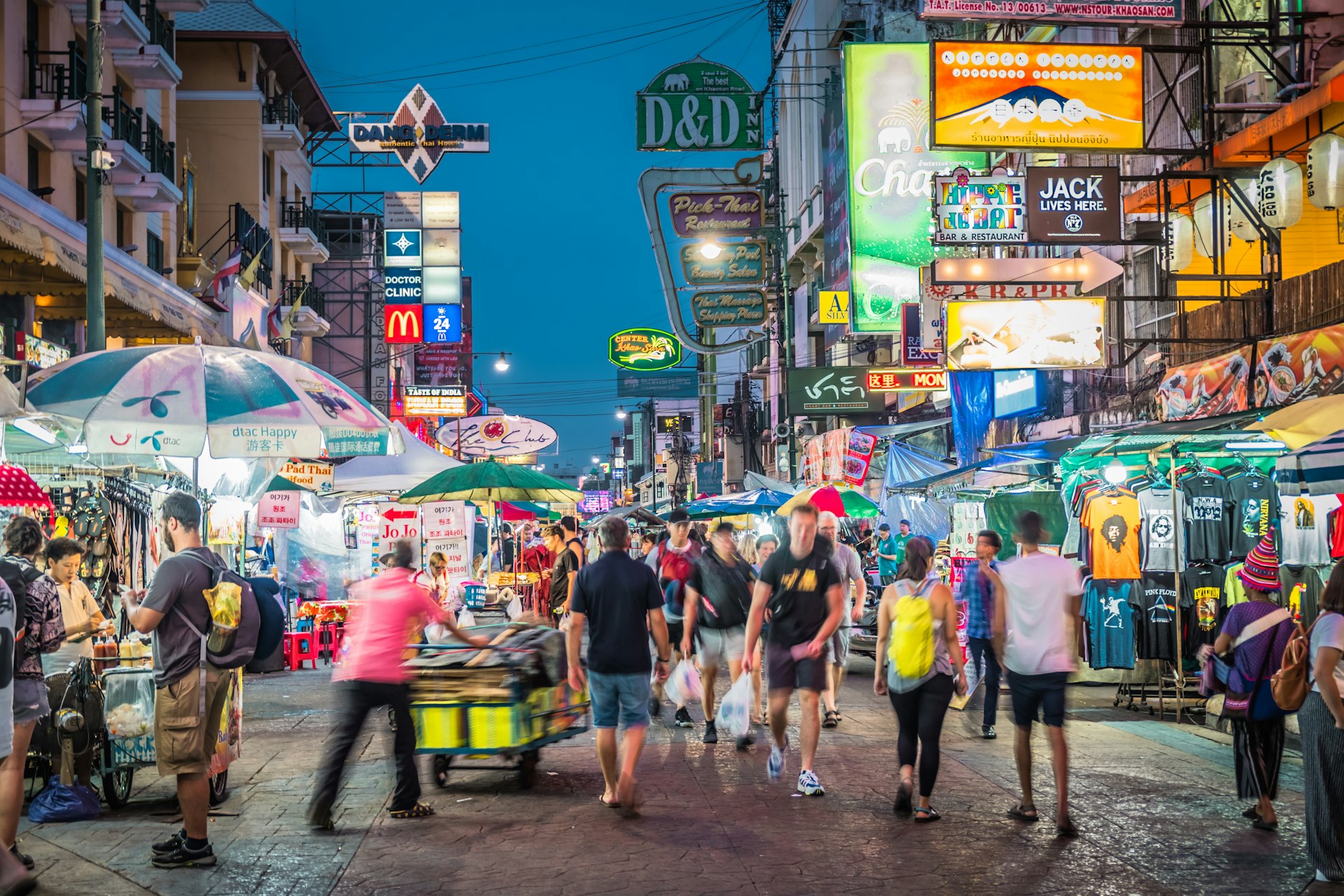
1. Bangkok
Best city for backpackers
Sure, Bangkok’s Thanon Khao San (Khao San Road) is a bizarre fantasy of what the backpacker-created hippy trail used to be, but it’s a must-see stop before you head off to explore Wat Pho and other temples on Ko Ratanakosin and the mercantile marvel that is Chatuchak Weekend Market. Load up on street food sà·đé (satay) sticks and enjoy the exuberant atmosphere.
Detour: With branches around the country, Jaroenthong Muay Thai Gym has a training centre a short walk from Thanon Khao San. There are courses for beginners if you want to try out this martial-art while you're here.
2. Khao Yai National Park
Best place to see wildlife
Thailand’s most impressive wildlife haven is just a few short hours from Bangkok by road, but the dense, dripping jungles hide elephants, monkeys, gibbons, bears, hornbills, bats and some of the last wild Thai tigers. Hikes in the rainforest pass through terrain strung with vines and orchids while waterfalls thunder into jungle pools.
Detour: For a complete change of place, swing by the wineries on the Khao Yai approach road to sample Thailand’s best home-grown vino.

3. Phuket
Best for family travelers
Thailand’s easy-in for families, Phuket is the gateway to the southern beaches, and a favorite starting point for families visiting Thailand for the first time. The food is fragrant and spicy, the resorts air-conditioned and comfortable, the beaches sand-sprinkled and lovely, and there’s tons for children to do, from kayaking, snorkeling and surfing to mangrove trips.
Planning tip: December is peak tourist season and conditions are ideal for diving and snorkelling. May is the start of the raining season. Some resorts close, others slash their prices.
4. Ko Tarutao
Best island escape
So far south it almost edges into Malaysia, Ko Tarutao Marine National Park is Thailand’s last true island escape. Laid-back Ko Lipe has its own burgeoning traveler scene, but most of the 51 sand-circled, reef-fringed isles are part of the national park, which means cheap beach-side campgrounds, abundant wildlife and the chance to be a modern-day Robinson Crusoe.
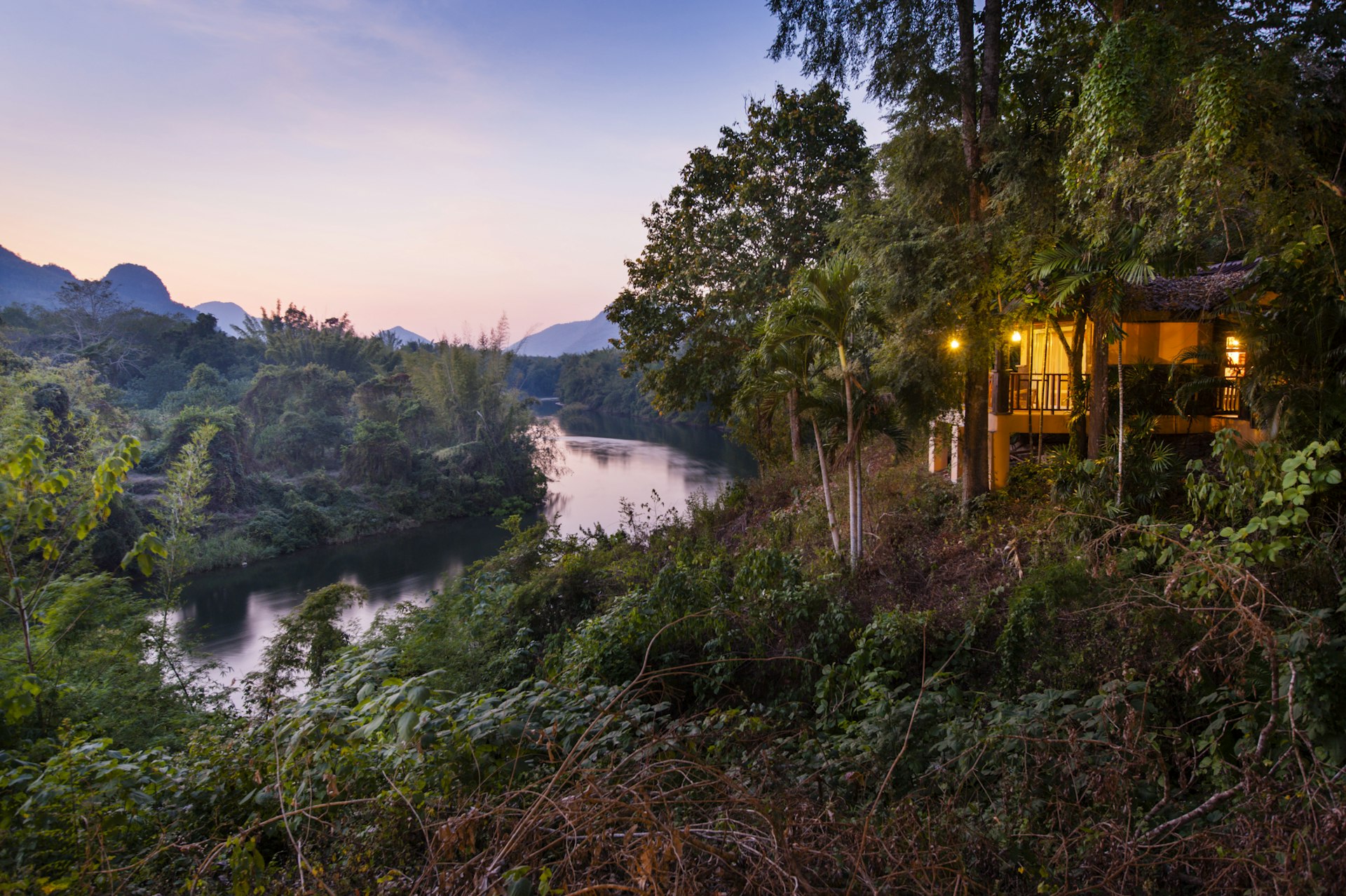
5. Kanchanaburi
Best region for local history
There’s more to Kanchanaburi than the famous bridge over the River Kwai. Stay in floating guesthouses on the river, explore the complex history of the Thailand-Burma railroad, swing by gleaming monasteries and pay your respects at WWII cemeteries. Then rent a scooter and head out of town to splash about in waterfall-filled Sai Yok National Park and Erawan National Park.
6. Chiang Mai
Best city for temples
Historic Chiang Mai is the capital of the north, and magnificent monasteries adorn every city block. Some are delicate jewel boxes covered in mirrored mosaics; others are towering constructions of hand-hewn teak, or centuries-old relics of exposed brickwork and carved stucco.
Planning tip: Any time is dinner time in the foodie capital of northern Thailand; graze all day then learn to cook the same dishes on a Chiang Mai cooking course.
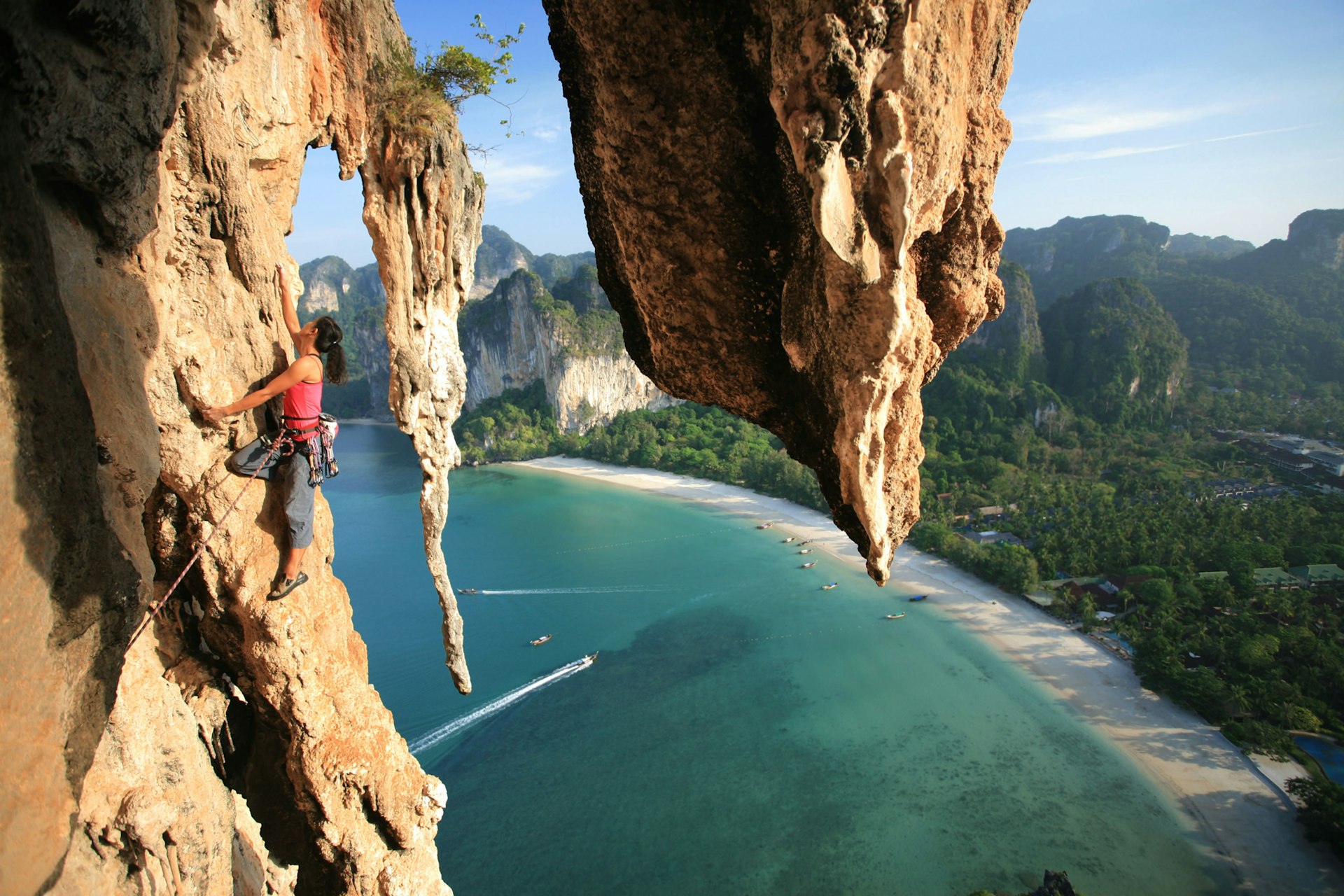
7. Railay
Best place for rock climbing
People talk about "climbing at Krabi" but in fact, the breath-taking karst cliffs are outside town, nestled around the beaches of Railay East, Railay West and Ton Sai. With dozens of routes bolted for sport climbers, Railay’s sea cliffs are one of the world’s top climbing playgrounds. Add in blinding white beaches, jungle trails, cheap beach-hut accommodation and access by longtail boat and this is one of the definitive Thailand experiences.
Local tip: Most climbers start off at Muay Thai Wall and One, Two, Three Wall, at the southern end of Hat Railay East, which have at least 40 routes graded from 4b to 8b on the French system.
8. Isan Region
Best region for rural culture
Over in far Northeastern Thailand, Isan culture prevails, and the tourist flood slows to a trickle. In rural towns such as Nong Khai and other outposts along the Mekong River, you’ll see a different face of Thailand as you wander eccentric sculpture gardens, watch dragon boat races on the mighty Mekong and uncover prehistoric rock paintings in Ubon Ratchathani.

9. Similan Islands
Best for scuba divers
Some 70 miles offshore from Phang-Nga province, the Similan Islands call out like a beacon to scuba divers and snorkelers. Despite some bleaching of hard corals, iridescent fish and soft corals abound, and there are lovely island beaches to relax on between dives. Manta rays and sharks (including whale sharks) are the top critters to spot beneath the waves.
Planning tip: Underwater visibility is best from February to April.
10. Khao Sok National Park
Best for rainforest views
The beautiful Rafflesia kerrii, one of the largest and pongiest flowers in the world, is just one of the natural wonders waiting in this unique and stunning national park, in the steamy center of southern Thailand. Access is on foot, hiking up towering limestone formations that soar above emerald rainforest views; gentler adventures include tubing, kayaking, rafting and sleeping in floating huts atop serene Chiaw Lan Lake.
11. Ayuthaya
Best place for Thai history
The second capital of Siam from the 14th to the 18th century, Ayuthaya has long since been eclipsed by other Thai cities, but time-worn relics of this golden age are littered around the streets. Recorded on the Unesco World Heritage list, the ruined temples and shrines are an evocative Thai history lesson.
Planning tip: While you're there, visit Bang Pa In Palace, the summer home of the kings of Thailand, which is just outside Ayuthaya.
12. Ko Pha-Ngan
Best for all-night partying
Ko Pha-Ngan is the full-moon party capital of Thailand, a place for hedonistic adventures that last all night. But don't worry: quiet corners with shady palms and swaying hammocks preserve the tropical island mood, and you can easily spend your days dozing on sand-dusted beaches to recover.
Planning tip: Get yourself moped ready before your trip; it's the best way to explore the island, especially as there are few public transport options to reach the more local and remote interior and north.
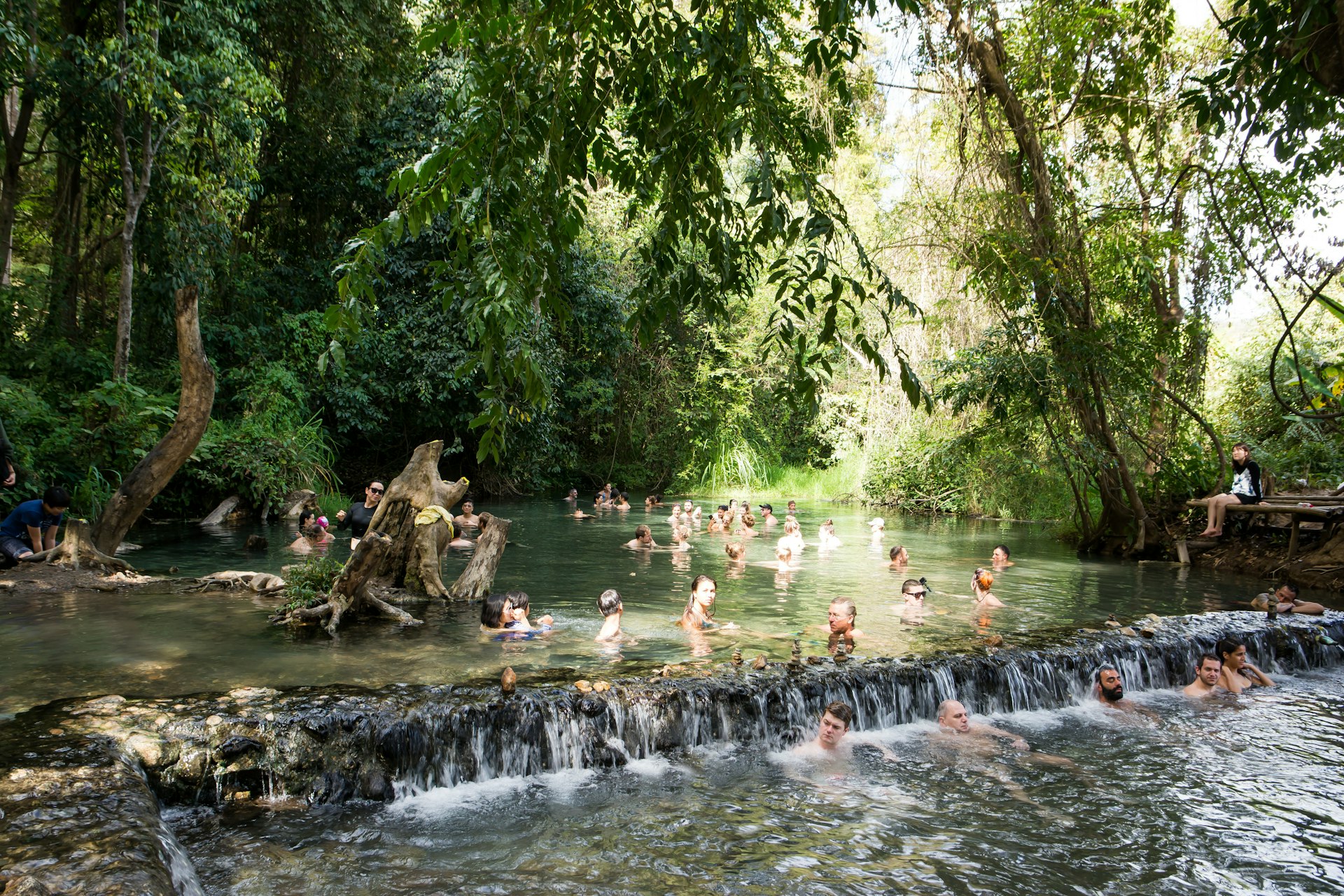
13. Pai
Best for hot springs
Rubbing shoulders with Myanmar’s Shan state, Pai is like a southern island escape, magically transported across the country and dropped into the northern Thai hills. Guesthouses, restaurants and backpacker bars are clustered in the township at the bottom of the valley, while the fringing peaks hide hot springs, forest waterfalls and majestic viewpoints.
Local tip: There are plenty of traditional Thai massage places charging from around 150B an hour. Reiki, crystal healing, acupuncture, reflexology and other non-indigenous methods of healing are also available.
14. Chiang Rai’s Hills
Best for hikers
Thailand’s far north is a land of jungle wonders, a former haunt of drug lords that now calls out to trekking-booted adventurers. Hiking is the big drawcard around Chiang Rai, passing through tribal homelands that spill over the borders into Myanmar and Laos.
Planning tip: Make time for the often overlooked temples and homestays in tea and coffee growing villages that make this one of the most charming corners of the country.
15. Sukhothai Historical Park
Best for ruins
The other great historic capital of Thailand, Sukhothai is regarded as the first capital of Siam, but it rests on the site of an even older Khmer capital. The ruins of these ancient kingdoms lie strewn around glorious Sukhothai Historical Park in the form of brick stupas, crumbling Buddha statues and toppled monasteries.
Planning tip: Rent a bike and explore the ruins at your own pace.

